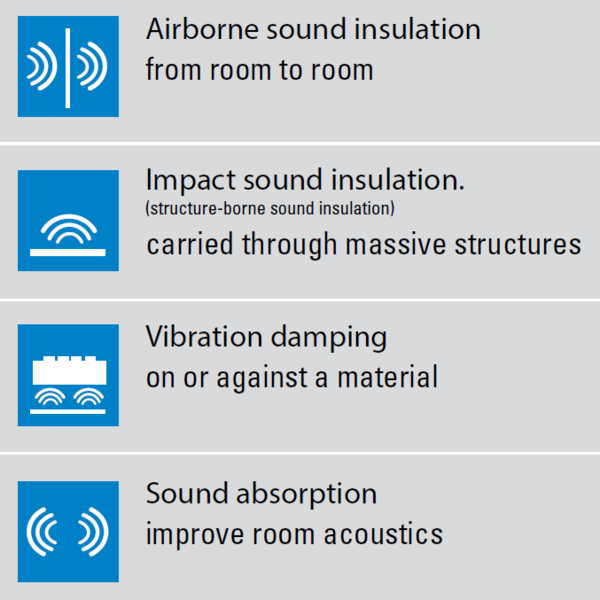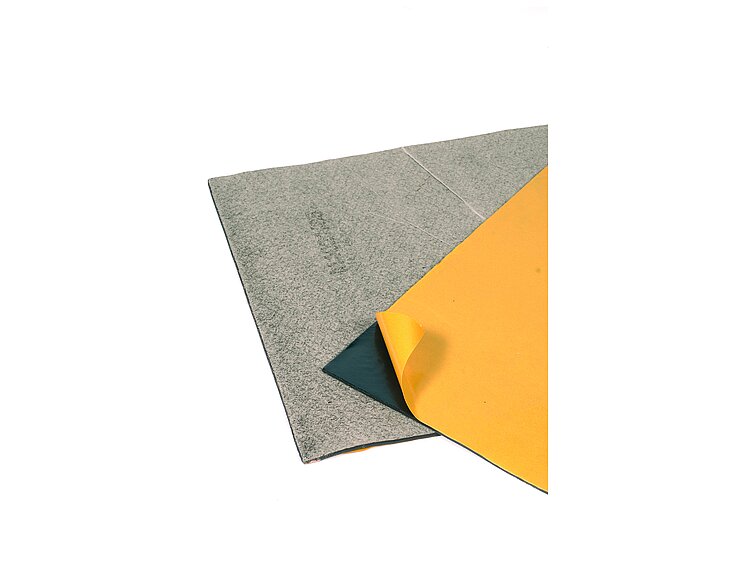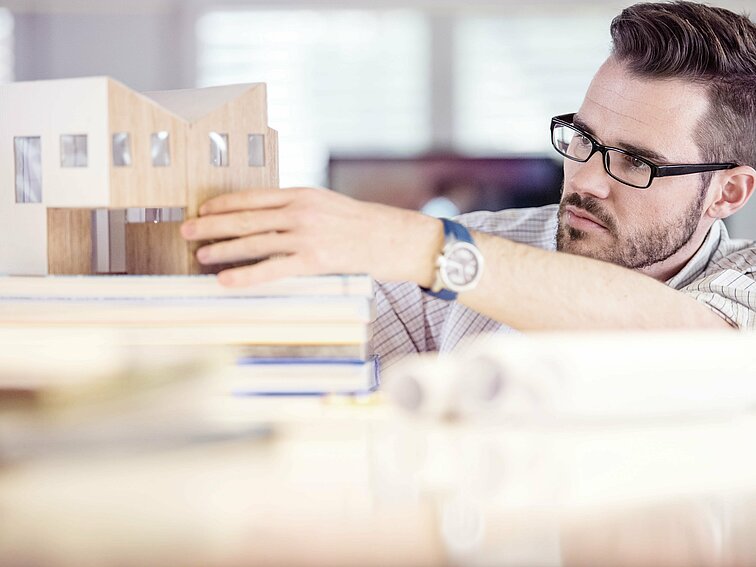Noise protection
Why protect against noise?

Noise is perceived subjectively. Music that we like will not sound as loud as a genre that we aren't too keen on, even if they are both played at the same volume. High notes are perceived as louder than low notes. Colours also influence our perception of noise. For example, our minds perceive red cars to be louder than green ones (source: TU Munich, in Die Zeit, 19 August 2004).
When it comes to noise protection, cutting corners is never a good idea, as attempting to reduce noise retroactively is usually difficult and requires a high financial outlay. You can save yourself the hassle and cost with good planning.
Effects
Objectively speaking, noise is harmful to health. The estimated cost to the economy is enormous. Depending on the sound pressure level, noise can cause the following negative effects:
- Communication and concentration problems
- Learning and performance difficulties
- Disturbed sleep
- Stress and long-term anxiety
- Headaches
- Cardiovascular problems
- High blood pressure
- etc.
But there are many other reasons for why noise protection must be given high priority during the construction of a building. These include:
- Protecting privacy
- Complying with laws and standards
- Preserving or even increasing the value of a property
- Ensuring undisturbed living even in densely built environments
- Improving quality of life
- etc.
What is sound?
Sound is a mechanical wave that propagates through space as the vibrations of a gaseous, liquid or solid medium. It is particularly audible in the human hearing range at vibration frequencies from 16,000 to 20,000 Hz.
In physical terms, sound that hits our ears is a vibration of air molecules that leads to small pressure fluctuations on and around the ear. The intensity of the sound is therefore influenced by the changes in air pressure.
Since these cover a large range from one to a billion, the sound level is commonly expressed on a logarithmic scale with the unit "decibel" (dB). The two most important characteristics of sound are sound pressure (loudness) and frequency (pitch). A frequency of less than 16 Hz is referred to as infrasound, while a frequency greater than 20,000 Hz is called ultrasound. Sound propagates through the air at a velocity of 340 m/s. This speed can vary greatly depending on the medium. Table 1 shows how well different media conduct sound.
Wood, for instance, is an excellent conductor of sound. This underlines the importance of noise protection measures in timber construction.
| Material | Density (kg/m3) | Propagation velocity (m/s) |
| Air (20 °C) | 0 | 344 |
| Air (-20 °C) | 0 | 319 |
| Rubber | 900 – 1’200 | 50 |
| Cork | 200 – 350 | 430 – 530 |
| Concrete | 2’300 – 2’500 | 3’700 |
| Wood along the grain | 300 – 900 | 3’500 – 5’000 |
| Steel | 7’850 | 5’000 |
| Glass | 2’400 – 2’600 | 5’000 – 6’000 |
Table 2 shows the sound levels of everyday sources of noise. A conversation from a distance of one meter is already perceived as being loud! As mentioned, our perception of noise is subjective and depends on how loud the background noise is. Nevertheless, it can generally be said that, above 40 dB, an increase or decrease in the sound level by 10 dB will be perceived as the volume either doubling or halving. While a difference in sound level of 3 dB is still perceptible, a difference of 1 dB is barely audible.
| Sound source | Distance | Noise level | Feeling |
| Absolute silence | 0 dB | Unpleasant | |
| Ticking of a clock | 20 dB | Barely audible | |
| Residential area with no traffic | 40 dB | Moderate noise | |
| Car | 10 m | 60 dB | Loud noise |
| Conversation | 1 m | 70 dB | Loud noise |
| Car horn | 5 m | 100 dB | Very loud noise |
| Aeroplane taking off | 10 m | 130 dB | Intolerable noise |
Sources of noise
At home and in the workplace, noise pollution can come from both inside and outside of the building.
Poor room acoustics can also contribute to noise pollution. Hard surfaces reflect sound particularly well, causing the common problem of reverberation. We can divide the topic of "noise protection" into four areas according to the different sources of noise.

Examples
Sources of sound inside a building include:
- Music and conversations from other apartments or rooms
- Noise from walking on ceilings and stairs
- Noise from technical building installations, especially water installations.
Sources of noise outside of a building mainly include:
- Noise from rail, road and air traffic
- Commercial noise pollution
- Construction noise
Noise protection measures are especially important in timber and lightweight construction. The main reasons for this are:
- Low mass => low airborne sound insulation
- Symmetrical structures => resonance
- Wood => excellent sound conductor
- Rigid panels => low insulation
- Rigid coupling => sound bridges and flanking


